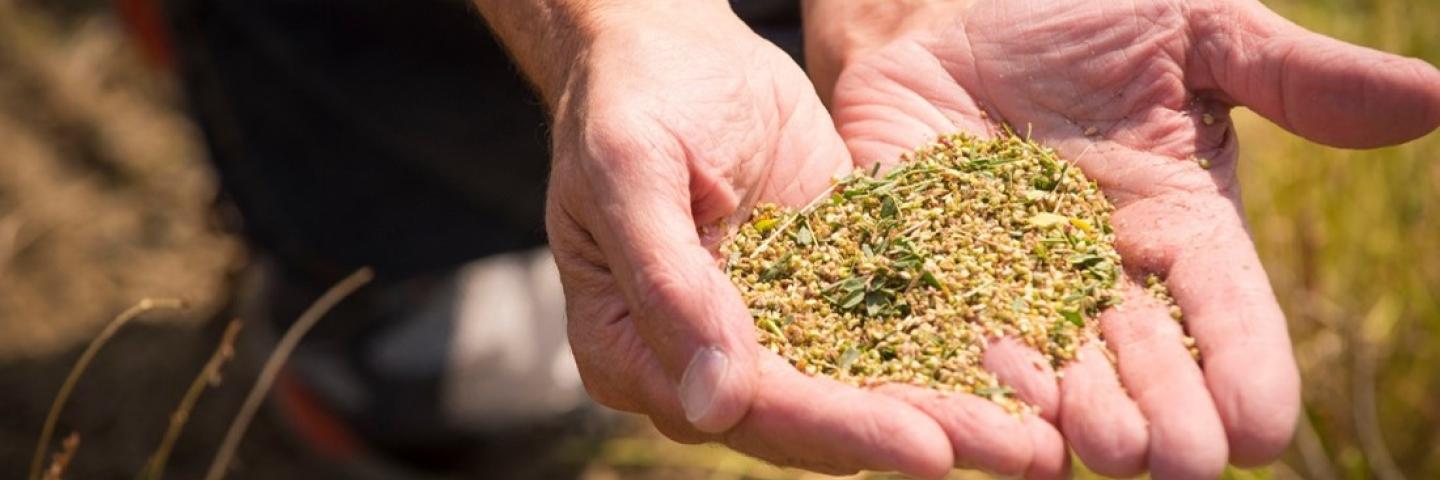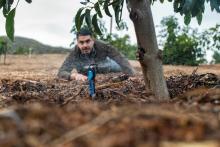
The CTA program works through a voluntary conservation network that fosters partnership between NRCS, conservation districts, state conservation agencies, and millions of private landowners.
Conservation Network
The CTA program works through a voluntary conservation network that fosters partnership between NRCS, conservation districts, state conservation agencies, and millions of private landowners. These partnerships expand the agency's ability to put conservation on the ground - which is NRCS' most important accomplishment. This ability to help put conservation on the ground is rooted in the continued trust and respect of America's farmers and ranchers built over the decades through mutually beneficial collaboration.
Voluntary Involvement
Through the CTA program, NRCS provides conservation technical assistance to individuals and groups of decision makers, communities, conservation districts, State and local government, tribes, and other Federal agencies, to help them voluntarily conserve, maintain, and improve natural resources. NRCS staff and partners provide tools and technical assistance by science to help our customers make decisions on their lands.
Conservation Planning
Most technical assistance provided by NRCS leads to the development of a conservation plan - a resource assessment of the land that allows the client to determine the opportunities for using the resources under their care and how they may achieve their goals. A successful plan helps our customers achieve their objectives while, at the same time, protecting our natural resources for the future.
NRCS helps decision makers with the conservation planning process ranging from site-specific plans for individuals to more complex community, watershed, or area-wide plans for groups of land managers.
Potential Customers
The CTA program is the foundation of the Nation's Federal conservation efforts on private lands, which is implemented in cooperation with the Agency's partners. The program is available to private individuals, groups of decision makers, tribes, units of governments, and non-governmental organizations in all 50 States, the District of Columbia, Puerto Rico, U.S. Virgin Islands, Guam, American Samoa, the Commonwealth of the Northern Mariana Islands, the Federated States of Micronesia, the Republic of Palau, and the Marshall Islands.
Individuals, groups, Tribes, and units of government requesting CTA Program assistance include, but are not limited to:
- Farmers, ranchers, and other decision makers concerned with the conservation of the land and natural resources
- County and other local government units such as park authorities; departments of public works; planning, zoning, school and institution boards; universities; highway departments; and tax assessors
- Citizen groups, youth groups, recreation groups, and garden clubs
- State and local units of government (highway, health, recreation, water resources, and regional planning), and tribal governments involved in establishing public policy regarding the use of natural resources
- Federal departments and agencies such as Defense, Housing and Urban Development, Transportation, Health and Human Services, and Interior, and
- Professional consultants who provide engineering, planning, environmental assessment, tax assessment, and natural resource management services
Conservation on the Ground
Based on the conservation plans developed, NRCS and its partners provide the guidance and assistance needed to design, layout and install approved conservation practices. There are over 167 approved conservation practices designed to fit both the resource needs and the land users objectives. Practices may range from simple management activities like irrigation water management to complex structural practices like animal waste management systems.




